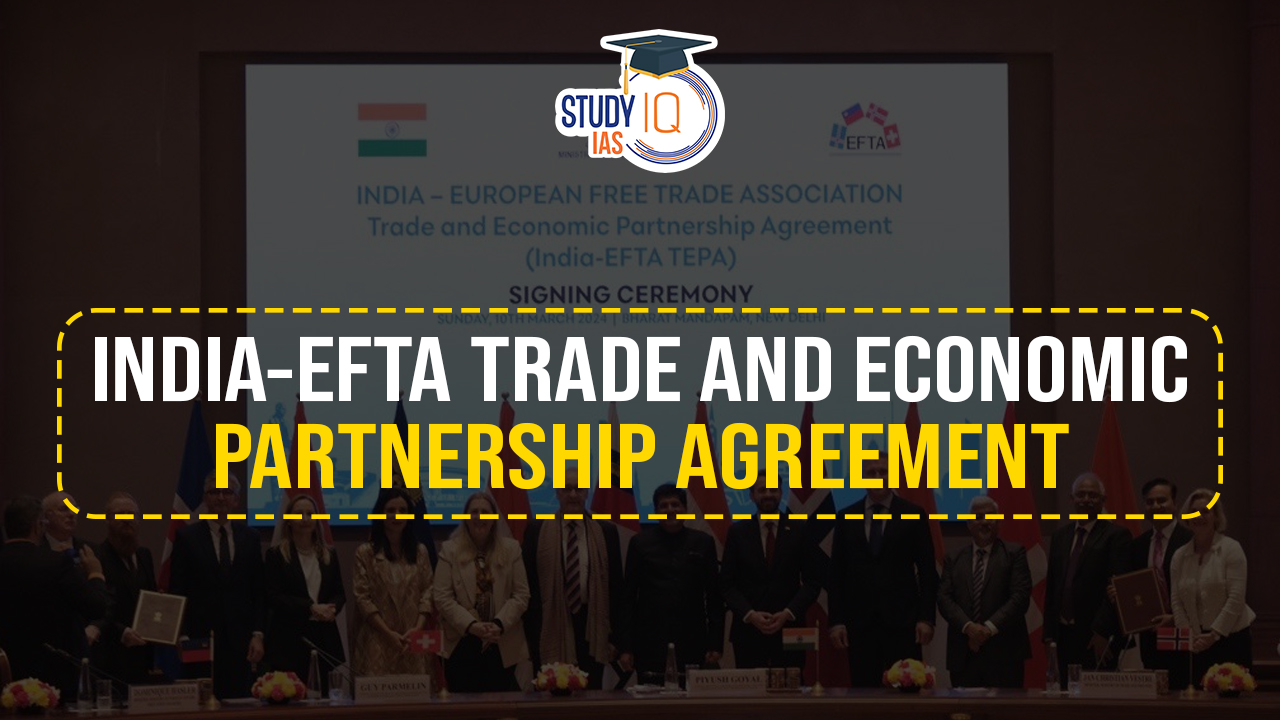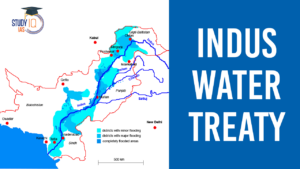Table of Contents
Context: India signed a free trade agreement (FTA) with four European countries — Iceland, Liechtenstein, Norway, and Switzerland.
More In News
- TEPA is India’s second comprehensive Free Trade Agreement (FTA), following the one with the United Arab Emirates.
- It involves significant tariff reductions, expanded market access, and streamlined customs processes.
- Unlike previous FTAs, this agreement with the European Free Trade Association (EFTA) countries introduces a dedicated chapter on human rights and sustainable development commitments.
What is Free Trade Agreement (FTA)?
- FTAs are arrangements between two or more countries or trading blocs that agree to reduce or eliminate customs, tariff and non tariff barriers on substantial trade between them.
- FTAs typically address trade in goods, including agricultural and industrial items, and trade in services, such as banking, construction, and trading.
- Beyond goods and services, FTAs often extend to Intellectual Property Rights (IPRs), investment, government procurement, and competition policy.
- This concept of free trade is the opposite of trade protectionism.
- Trade Pact Terminology: Terms such as FTA (Free Trade Agreement), PTA (Preferential Trade Agreement), and RTA (Regional Trade Agreement) are often used interchangeably to describe trade agreements.
- RTA Definition by WTO: The World Trade Organization (WTO) uses “RTA” to encompass all forms of preferential economic agreements among regions.
- WTO’s Role: As a 166-member institution based in Geneva, the WTO oversees global issues related to exports and imports.
- India’s Membership: India has been a participating member of the WTO since 1995.
- PTA Explained: A Preferential Trade Agreement (PTA) or Early Harvest Scheme, like the one between India and Thailand, involves countries agreeing to reduce or eliminate tariffs on selected goods.
- Other Agreement Types:
- CECA: Comprehensive Economic Cooperation Agreement, e.g., India-Singapore.
- CEPA: Comprehensive Economic Partnership Agreement, e.g., India-Korea.
- BTIA: Bilateral Trade and Investment Agreement, e.g., India-EU.
- TEPA: Trade and Economic Partnership Agreement, a broad term for such agreements.
| Facts |
|
Benefits OF FTAs
- Market Access: Negotiating trade deals allows for zero-duty entry into markets of partner countries, facilitating the diversification and expansion of exports.
- Competitive Equality: Trade agreements level the playing field with competitors who may benefit from existing FTAs with those countries.
- Preferential Treatment: FTAs grant favourable treatment in partner markets over competitors from non-FTA countries.
- Investment Incentive: Such agreements draw foreign investment, boosting domestic manufacturing.
- Resource Access: They provide access to essential raw materials, intermediate products, and capital goods necessary for value-added manufacturing.
- Long-term Goals: Trade agreements aim for long-term efficiency and enhance consumer welfare.
We’re now on WhatsApp. Click to Join
What is the European Free Trade Association (EFTA)?
- About: The European Free Trade Association (EFTA) consists of Iceland, Liechtenstein, Norway, and Switzerland.
- Establishment: In 1960 through the Stockholm Convention.
- Aim: To promote free trade and economic integration among its members.
- Relationship with EU: EFTA operates alongside the European Union (EU), with all members participating in the European Single Market and the Schengen Area but not in the EU Customs Union.
- Main Objectives:
- To maintain and develop the EFTA Convention, which governs economic relationships among the EFTA states.
- To manage the European Economic Area (EEA) Agreement, integrating the EU and three EFTA states (Iceland, Liechtenstein, Norway) into a single market.
- To expand EFTA’s global network of free trade agreements.
| Facts |
|


 Indus Water Treaty 1960 Suspended by Ind...
Indus Water Treaty 1960 Suspended by Ind...
 5 Years of SVAMITVA Scheme and Its Benef...
5 Years of SVAMITVA Scheme and Its Benef...
 Places in News for UPSC 2025 for Prelims...
Places in News for UPSC 2025 for Prelims...





















